Tretinoin vs Retin A: Are they the same thing?
“What is the difference between tretinoin vs Retin A?” Is a common question asked by many patients looking to incorporate retinoids in their skin care routine. Keep reading to find out!
Table of Content:
Are tretinoin and Retin-A the same? | Are tretinoin and Retin-A Micro the same? | What is the difference between tretinoin and retinol? | What conditions can you treat with tretinoin? | How to get a prescription? | Are there similar medications to tretinoin?
Our commitment to producing high-quality content:
The information presented in this article is based on scientific research and the professional advice of our Content Medical Reviewers, who are experts in the field of Dermatology. How we write our content →
Key article points
- Tretinoin vs. Retin-A: Tretinoin and Retin-A are the same product, with tretinoin being the active ingredient in Retin-A, as well as other brands like Refissa and Renova.
- Retin-A vs. Retin-A Micro: Retin-A Micro differs from standard Retin-A in its microsphere gel formulation, which provides a slower release of tretinoin, reducing irritation and making it more suitable for sensitive skin.
- Tretinoin’s Uses: Tretinoin is a versatile prescription retinoid used to treat acne, photoaging, skin roughness, and hyperpigmentation, making it effective for both medical and cosmetic skin concerns.
- Retinol vs. Tretinoin: Unlike tretinoin, retinol is a less potent retinoid available over the counter, whereas tretinoin requires a prescription and is generally more effective.
- Tretinoin combinations: Tretinoin can be combined with other medications, such as clindamycin for acne or hydroquinone for hyperpigmentation, to enhance treatment results.
Do you need a tretinoin prescription?
So, is there a difference between tretinoin and Retin A?
Dr. Anna Chacon, board-certified dermatologist, says that the short answer is no, tretinoin and Retin A are the exact same product. The only difference relies on the fact that tretinoin is the active ingredient in the medication commercially known as Retin A. Generic tretinoin is manufactured by several pharmaceutical companies such as: Bausch Health, Johnson and Johnson and Valeant Pharmaceuticals. Tretinoin is also the active ingredient in the medications commercially known as Refissa, Renova and Altreno.
Is there a difference between Retin-A and Retin-A Micro?
Dr. Chacon says that Retin-A and Retin-A Micro are both forms of tretinoin used to treat acne and improve skin texture, but they differ in formulation and skin tolerance. Retin-A Micro uses a microsphere delivery system that releases tretinoin gradually, making it less irritating and more suitable for sensitive skin compared to the standard Retin-A, which releases the medication all at once. This difference often makes Retin-A Micro easier to incorporate into a skincare routine with as it is less irritating, but often it is more expensive.
How to get a tretinoin prescription?
To get a tretinoin prescription you can have a photo-consultation with a board-certified dermatologist for $59. Medication refills are $39.
Retin-A
Tretinoin (Retin-A) is available in various formulations, including creams and gels that come in different strengths.
Retin-A Micro (Tretinoin microsphere gel)
Retin-A Micro, on the other hand, is a specific formulation of tretinoin in a microsphere gel. The microsphere technology allows for a slower release of tretinoin into the skin over time, which can result in reduced irritation compared to some other tretinoin formulations. Retin-A Micro can provide the benefits of tretinoin with potentially fewer side effects.
This can be particularly beneficial for individuals with sensitive or easily irritated skin, but the choice between these two products may depend on individual skin type, tolerance, and the specific condition being treated, and it is best made in consultation with a healthcare provider or dermatologist.
Consult a Board-Certified Dermatologist Now!
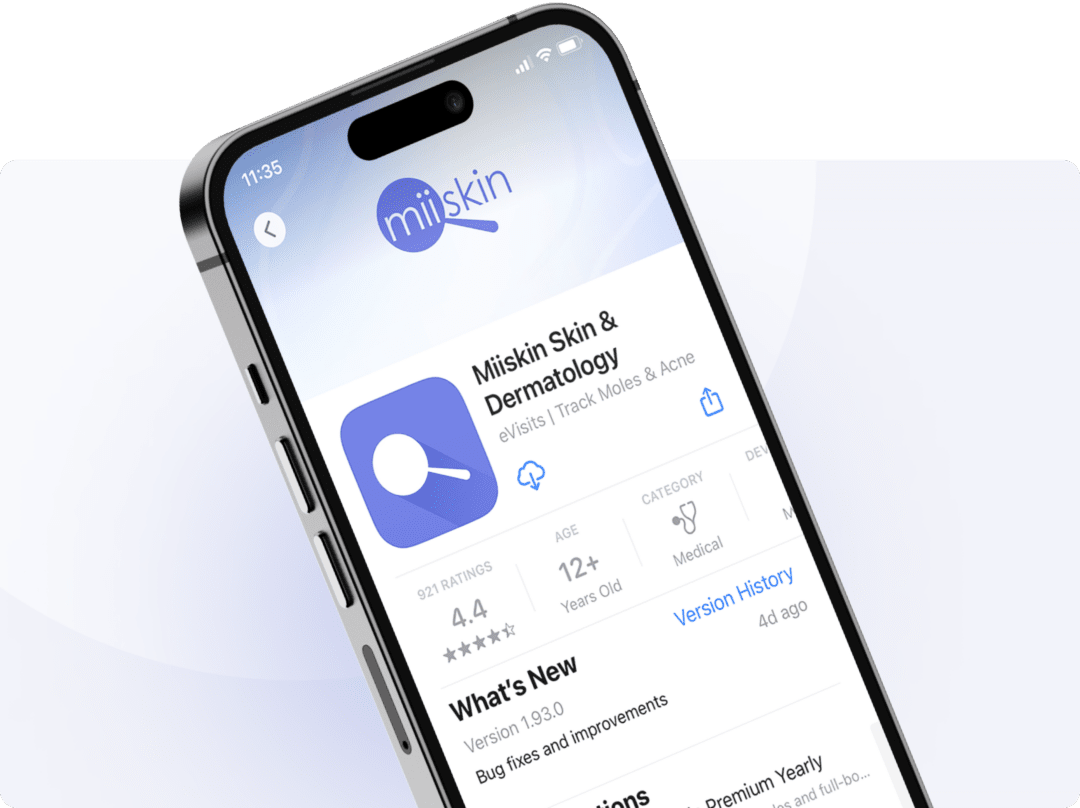
Download the Miiskin app to connect with independent, board-certified dermatologists who are licensed in your state. Answer a few questions, upload some photos and get a treatment plan in 1-2 days. Consultation price is $59 and medication renewals are only $39.
Online dermatology care is ideal for chronic dermatology conditions.
Ok, so what is tretinoin?
Tretinoin, is a topical medication widely used in dermatology derived from vitamin A, also known as all-trans retinoic acid (ATRA) categorized as a prescription retinoid.
Dr. Chacon says that tretinoin is FDA-approved for the topical treatment of acne vulgaris, making it a valuable tool in managing mild, moderate, and severe cases of acne. Tretinoin has also been approved for the treatment of photoaging (including fine facial wrinkles), facial skin roughness, and hyperpigmentation (commonly referred to as ‘sun spots’). This versatility highlights its effectiveness in improving skin quality and appearance, addressing both medical and cosmetic concerns related to skin health1.
To learn more in depth about tretinoin, read the Tretinoin Patient Guide by board-certified dermatologist Dr. Mohta.
But what about retinol, is it the same thing as tretinoin and Retin A?
Dr. Chacon says that tretinoin (and Retin A) are not the same thing as retinol. Both tretinoin and retinol are retinoids but they have very different properties and uses in skin care. And although retinol and tretinoin come in many different strengths, retinol can be bought over the counter, while you need a doctor’s prescription to get tretinoin.
Can tretinoin be combined with other medications to improve results?
Dr. Chacon says that tretinoin can be combined with different medications depending on the results you wish to obtain. Here is a list of common tretinoin combinations for different uses:
Anti-aging
- Altreno (tretinoin, hyaluronic acid, collagen and glycerin)
- Tretinoin and niacinamide
Acne
Hyperpigmentation
How can I get a prescription for tretinoin?
You can have a photo consultation with a virtual dermatologist for $59.After the consultation, which usually takes 1-2 days to get an answer, you will receive a customized prescription that is adequate for your skin problem..
Request a tretinoin prescription for acne or anti-aging!
How often should I apply tretinoin on my skin?
Dr. Chacon says that in the beginning, you should only apply tretinoin two to three times per week and increase slowly. Read our Dermatologist Guide on How to use tretinoin.
How long does tretinoin take to work?
It depends on how often you apply it, but you will be able to see visible results after three months. Read our Weekly progress: How long does it take for tretinoin to work?
Are there other similar medications to tretinoin and Retin A?
Dr. Chacon says there are a few prescription retinoids that work similarly to tretinoin but that have slightly different properties and uses:
Adapalene
Adapalene (also known as Differin) is a topical medication commonly used to treat acne. It belongs to the retinoid class of drugs and works by promoting skin cell turnover, preventing the formation of acne lesions, and reducing inflammation2. Adapalene is available in various formulations, such as gels and creams, and is applied directly to the skin to help manage acne and improve skin texture.
Need Expert Dermatologist Care?

Get expert advice from a licensed online dermatologist by simply uploading photos from your phone. If needed, a prescription (branded or generic depending on preference) will be sent directly to your favorite pharmacy. Nationwide coverage.
Tazarotene
Tazarotene (also known as Arazlo lotion or Fabior foam) is a topical medication used primarily to treat acne3, psoriasis4 and photoaging5. It belongs to the retinoid class of drugs and works by promoting skin cell turnover and reducing inflammation. Tazarotene is available in gel or cream formulations and is applied directly to the affected skin areas to improve skin health and manage specific dermatological conditions.
Trifarotene
Trifarotene (also known as Aklief) is a topical medication used for the treatment of acne and melasma6. It is a retinoid, specifically designed to target and improve skin conditions associated with acne, such as clogged pores and inflammation. Trifarotene comes in a cream formulation and is applied directly to the affected skin areas to help manage and clear acne lesions.
The Takeaway
Although tretinoin and Retin-A are the same product per se, you can find a wide variety of tretinoin formulas that are widely available or available through compounding pharmacies. Your virtual independent dermatologist will guide you through the different options available and will make sure you get the best treatment for your skin problem.
References:
https://www.ncbi.nlm.nih.gov/books/NBK557478/
https://www.ncbi.nlm.nih.gov/books/NBK482509/
https://www.ncbi.nlm.nih.gov/pmc/articles/PMC4043801/
https://www.sciencedirect.com/science/article/abs/pii/S0190962297702160
https://www.ncbi.nlm.nih.gov/pmc/articles/PMC2544371/
https://www.ncbi.nlm.nih.gov/pmc/articles/PMC9166940/


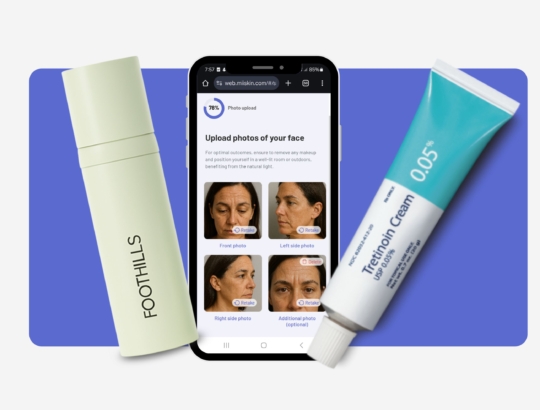

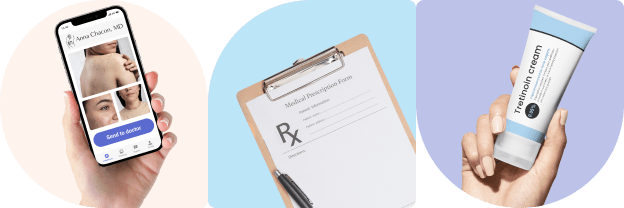

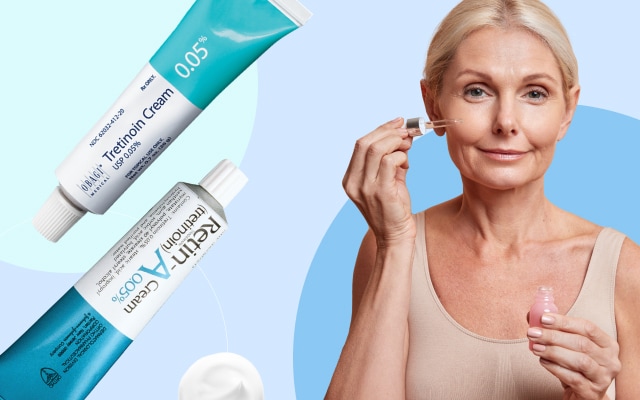
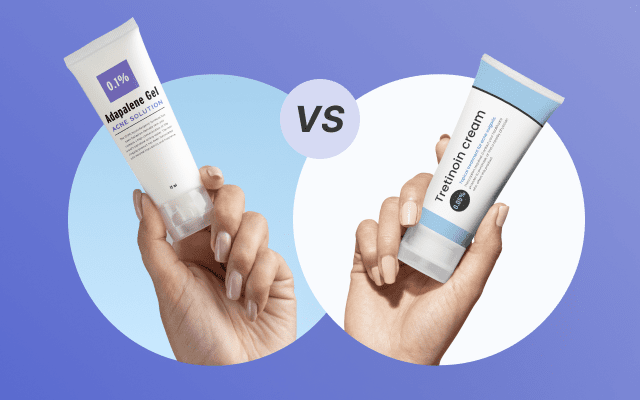
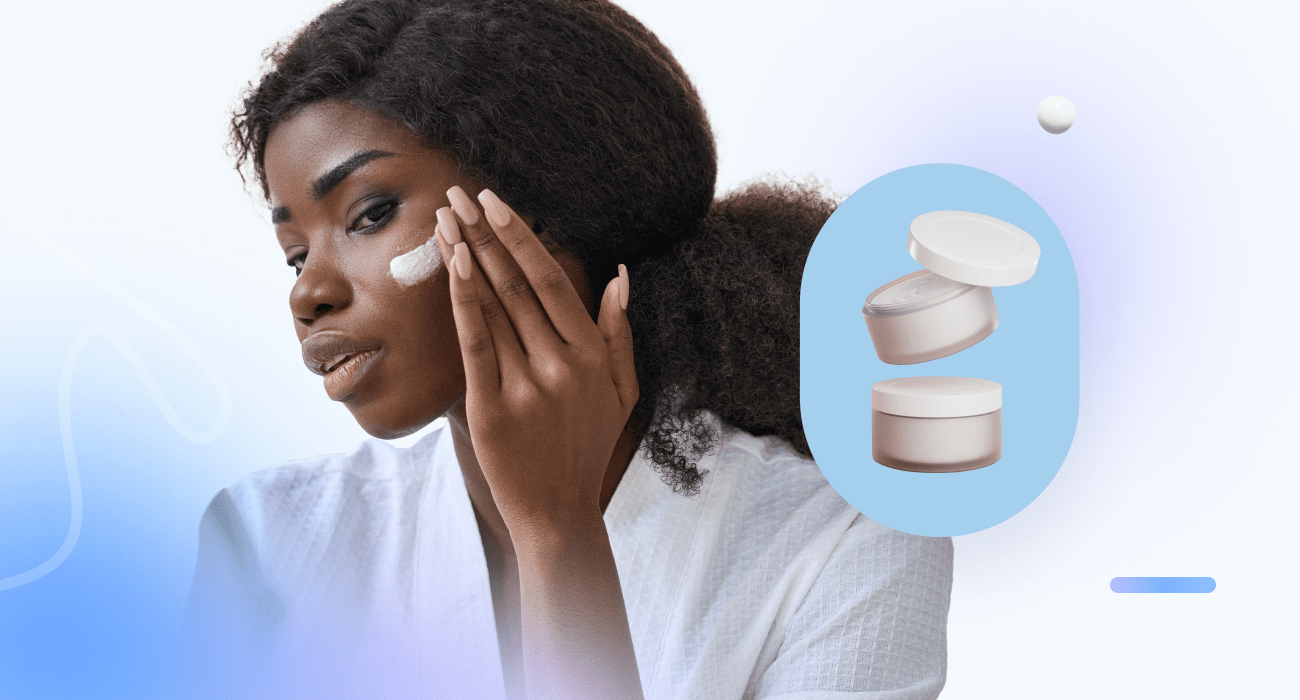
 Get a tretinoin prescription for acne or anti-aging!
Get a tretinoin prescription for acne or anti-aging!